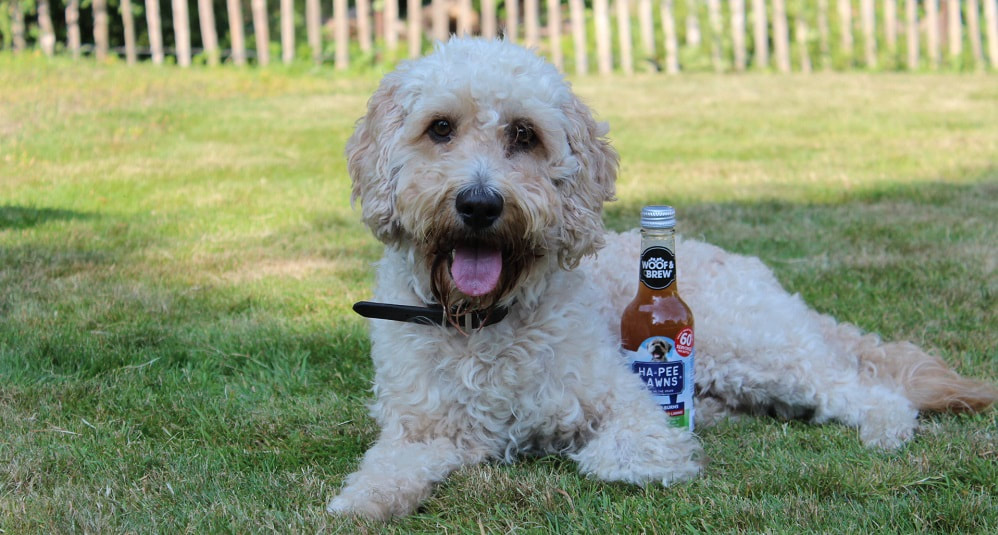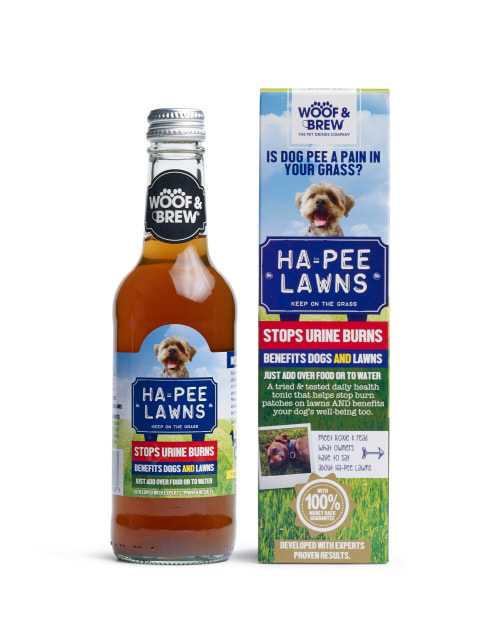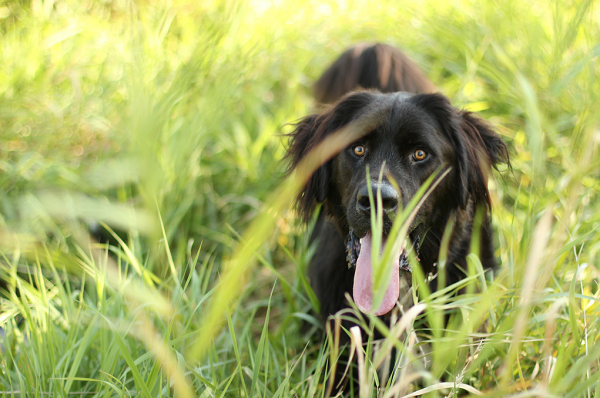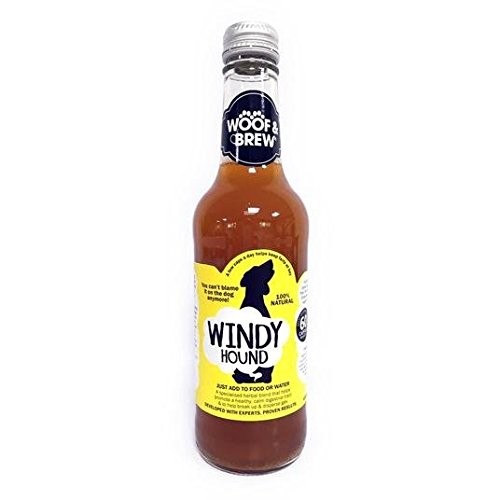|
Three myths and a truth Summer well and truly was a scorcher! The grass is suffering from a severe lack of rain but also from the dog! Where your dog pees, brown patches develop, which is often called lawn burn or lawn scald. Why does this happen, and what can you do about it? There are several myths about this: Myth one: Only bitches cause lawn burn because their urine is different to that of male dogs. Completely untrue. The only reason why it often seems that bitches cause brown spots but males don't is that female dogs squat to pee, so there is a large amount of pee on a small area of lawn. Males tend to spread their pee over a wide area (applies to humans too, apparently!) so there is less volume of urine on any particular patch of lawn. Myth two: It happens because a dog's urine is too acidic. Nope, not true either. The brown spots aren't acid burns. Grass likes an acidic pH to grow in – anything between 5.5 and 7. The pH of an average dog's urine is between 5.5 and 7. So no problem there. Myth three: It happens because a dog's urine is too alkaline. Now it is true that if a dog's urine were very alkaline it could harm grass growth, but it a rare finding, and not a common cause of brown lawn burn. There are substances that you can add to a dog's drinking water that are alleged to stop brown patches on the lawn. One recommendation is the use Gypsum salts: not only do these not work, but Gypsum (Calcium sulphate) can cause eye, skin, oral, and respiratory irritation in dogs. One particular home remedy, tomato juice or tomato ketchup, likely has its primary benefit through both increased salt and water intake. While salt will make the dog drink more and dilute the urine, increased salt intake can cause problems for dogs with existing kidney or heart conditions. Pure tomato flakes help neutralise nitrogen, but tomato juice and ketchup won't help. Cider vinegar has been promoted as another 'cure' for lawn scald. This may alter the urine pH slightly, but urine pH is not the cause of lawn burns. THE TRUTH Lawn burns are caused by the high nitrogen content in dog urine. Dog pee has a high nitrogen content because dogs are carnivorous, eat lots of protein, and the breakdown products of protein digestion passed out in the urine are high in nitrogen. When passed on a small area of lawn it acts like a massive overdose of fertiliser and 'burns' the grass. The effect will be more noticeable if the urine is strongly concentrated, or if the urine is very alkaline, but it is the nitrogen content only that actually causes the effect. THE CURE First, encourage your dog to drink plenty of water. This will ensure the urine produced is not too concentrated. Secondly, find a product that will bind with and neutralise the nitrogen in the urine There is one product that will do both – WOOF&BREW's Ha-Pee Lawns Herbal Tonic. Most dogs love to drink the tonic so they will be naturally well hydrated, and the herbs in the blend do really bind and neutralise the nitrogen and help stop lawn burns, as well as promoting a healthy urinary tract in general. And here's an extra grass growing tip: If you're a lazy gardener who doesn't like getting the lawnmower out, sprinkle your lawn with whisky – it'll come up half cut! Find out about the rest of our health tonic range, including Anxiety tonic. All tonics come with a 100% money back guarantee if you are not satisfied!
9 Comments
 Dr Richard Allport BVetMed VetMFHom MRCVS Natural Medicine Centre Tia Maria and Moby Dick … …. may not seem to go together but they are (allegedly) Cockney rhyming slang for diarrhoea and feeling sick. And, incidentally, should you want to remember how to spell diarrhoea, think of the first letters of: Dash In A Real Rush, Hurry Or Else Accident! So this blog is all about upset digestion in dogs - why it happens and what you should do about it. Just why do dogs get sickness and/or diarrhoea? Lots of reasons. Scavenging for one – dogs are natural scavengers and most love to pick up and swallow anything that looks remotely edible (discarded remains of takeaways, food left out for the birds, other dogs' poo) and although they do have very strong stomach acids, sometimes even this acid can't cope with the disgusting material ingested and infection or inflammation happens within the stomach and intestines, leading to vomiting or diarrhoea from within to without. A sudden change in diet can also trigger similar symptoms, or the food itself can be contaminated or unsuitable. It's a well known fact that chocolate is potentially poisonous to dogs but it's not so well known that onions, macadamia nuts and grapes can be toxic. In the garden there may be poisonous plants, and something as apparently harmless as a daffodil bulb can be dangerous. Dogs can pick up bacteria and viruses that can cause gastro enteritis, especially in the summer and autumn when these dastardly microbes are likely to survive for longer in the warm weather and when organic matter that dogs find while on scavenging patrol is more likely to carry fast multiplying micro organisms. And many dogs, who don't (or aren't allowed to) scavenge, and don't pick up infections, still regularly get bouts of sickness and/or diarrhoea. Rather like humans can suffer from conditions like colitis and IBD, dogs also often suffer from similar conditions. So those are some of the commoner causes of what vets will abbreviate in your dog's medical notes to V+D+ (Vomiting, Diarrhoea). Or, in more severe cases of gastro enteritis, V++D++. Should your dog be unlucky enough to get the runs, the trots or be throwing up, what should you do? If your dog seems really unwell and in pain, or there is significant blood (at either end), or the stomach is swelling up, go to your vet as soon as possible. If it's more of a minor 'upset stomach', your dog is still bright and may want to eat and run around as normal, there is usually no need to rush to the vet. You may wish to ring first to ask their advice. It's also not always necessary to starve for 24 hours as used to be advised. You may want to try and give small meals of easily digestible food, make sure there is clean water available, and perhaps give a natural stomach and intestine soothing and binding agent such as Slippery elm powder and Bentonite clay, give probiotics and a little ginger (soothing and a natural anti nauseant) or, especially if there is noticeable 'gas' production at either end, a little peppermint. If, despite this, any stomach upset persists more than a couple of days, or you feel worried, do phone or take your dog to the vet right away. But prevention is better than cure, and any dog that is prone to scavenge, has a 'sensitive' stomach or is known to suffer from colitis, IBD or any other recurrent digestive problems will benefit from something to help promote a healthy digestion. And what could be better than WOOF&BREW's Digestion Tonic – a blend of herbs that helps soothe and protect the stomach and intestines and promotes a balanced digestive tract as well as helping efficient absorption of nutrients. And should your dog be unlucky enough to suffer from flatulence and eructation (OK, belching!) WOOF&BREW's fabulous Windy Hound tonic helps to break up and disperse unwanted gas in the intestines.
There it is – WOOF&BREW have a tonic for all seasons, and a tonic for all reasons … including Tia Maria and Moby Dick Find out more details on the health range at WOOF&BREW here! |
Categories
All
|
|
Copyright © WOOF&BREW 2024
|






